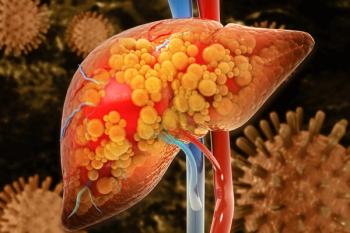
Study Finds AA Associated With Connective Tissue, Ocular Diseases and Vitamin D Deficiency
Meta-analysis results identify high and low associations of various comorbidities like vitamin D deficiencies, ocular diseases, among others in patients with alopecia areata (AA), to promptly manage and improve treatment outcomes.
Alopecia areata (AA) is associated with various medical comorbidities such as vitiligo, vitamin D deficiency, thyroid, and ocular diseases across all organ systems in disease categories and healthy controls while possessing potentially protective factors for other disorders.
A
Studies included case-controlled, cross-sectional, and cohort designs assessing at least 1 comorbidity, excluding psychiatric or psychosocial comorbidities, in relation to AA. The RStudio software and Newcastle-Ottawa scale calculated statistical analysis with quality assessment. Meta-analyzed odds ratios (ORs) and CIs found the estimated heterogeneity variance.
A total of 102 studies met inclusion criteria, 31 case control, 14 cohort, and 57 cross-sectional, were utilized. Retrieved records had 51 studies with control groups between healthy controls and different comorbid conditions (n = 72,011,041; n = 149, respectively). Results found 57 comorbidities with positive odds (OR > 1), 6 with negative odds (OR < 1), and 50 with inconclusive ORs in patients with AA.
Higher ORs for hyperinsulinemia, coronary artery disease, dyslipidemia, and myocardial infarction were present in patients with AA. Metabolic syndrome had one of the highest ORs compared with healthy controls and data available from various studies (OR, 5.03; 95% CI, 4.18-6.06).
Unsurprisingly, connective tissue and autoimmune diseases were significantly higher in patients with AA since the pathogenesis involves immune-mediated and inflammatory processes. Juvenile arthritis and rheumatoid arthritis were associated with AA as well as broad diagnoses of unspecified connective tissue disease, unspecified or other autoimmune disease, and unspecified rheumatic disease had higher ORs. Systemic lupus erythematous represented one of the highest ORs with healthy controls in the available data (OR, 5.53; 95% CI, 3.31-9.23).
Dermatologic diseases with greater association levels to AA were psoriasis, urticaria, herpes simplex, herpes zoster, and skin infections, with vitiligo included in the highest OR population (OR, 5.3; 95% CI, 1.86-15.1).
Patients with AA had higher odds of several thyroid diseases such as toxic nodular goiter, nontoxic nodular goiter, hypothyroidism, Graves disease, autoimmune hypothyroidism, hyperthyroidism, unspecified thyroid abnormalities, and unspecified thyroiditis but Hashimoto thyroiditis (OR, 4.31; 95% CI, 2.51-7.4) was among the highest OR population.
Gastrointestinal and hepatobiliary diseases had higher odds of Celiac disease, chronic liver disease, and any form of gastrointestinal infections in patients with AA. However, irritable bowel syndrome was among the lowest OR compared with healthy controls.
Colorectal cancer was also of the lowest OR population among healthy controls. Hepatocellular carcinoma, gastric cancer, and nonmelanoma skin cancer had lower odds in patients with AA. The only malignancy with a positive odds ratio was thyroid cancer.
Neurologic and ocular diseases had higher odds of Alzheimer disease and multiple sclerosis. Positive associations for patients with AA included fundus changes, disorders of the sclera, lens changes, inflammation of the eyelid, iridocyclitis, keratitis, disorders of the lacrimal system, and other disorders of the choroid or retina.
Patients with AA included high associations of vitamin D deficiency (OR, 10.13; 95% CI, 4.24-24.2), with some excessive daytime sleepiness, and sensorineural hypoacusis.
Higher prevalence of atopic dermatitis, allergic rhinitis, asthma, and unspecified atopic conditions were associated with AA. Iron deficiency anemia, unspecified anemia, pelvic inflammatory disease, and ovarian cysts were of high risk. Multiple respiratory illnesses such as pneumonia, acute bronchitis, lower and upper respiratory tract infections, and influenza were all positively associated to patients with AA, along with genital infections.
The study was limited by the limited scope of search strategy, databases, and selection criteria. Generalizability is limited because the study results are not representative of all patients with AA due to publication bias and the inclusion of observational studies often leads to selection bias. The validity of the calculated effect sizes can become compromised with variations in data, outcome assessment, and potential confounders. Some endocrine diseases could not be calculated due to lack in control groups, but a low prevalence of Addison disease, growth hormone deficiency, and hyperparathyroidism were found.
Patients with AA had the strongest associations to ocular (OR, 3.15; 95% CI, 1.91-5.18), thyroid (OR, 3.13; 95% CI, 2.38-4.13), and connective tissue and autoimmune diseases (OR, 2.28; 95% CI, 1.75-2.97). The authors stated, “Further investigation of the pathogenesis of AA will help elucidate the mechanisms shared between AA and other systemic diseases and determine whether comorbidity risk can be modified by treatment of AA.”
Reference
Ly S, Manjaly P, Kamal K, et al. Comorbid conditions associated with alopecia areata: a systematic review and meta-analysis. Am J Clin Dermatol. 2023;24(6):875-893. doi:10.1007/s40257-023-00805-4
Newsletter
Stay ahead of policy, cost, and value—subscribe to AJMC for expert insights at the intersection of clinical care and health economics.












































